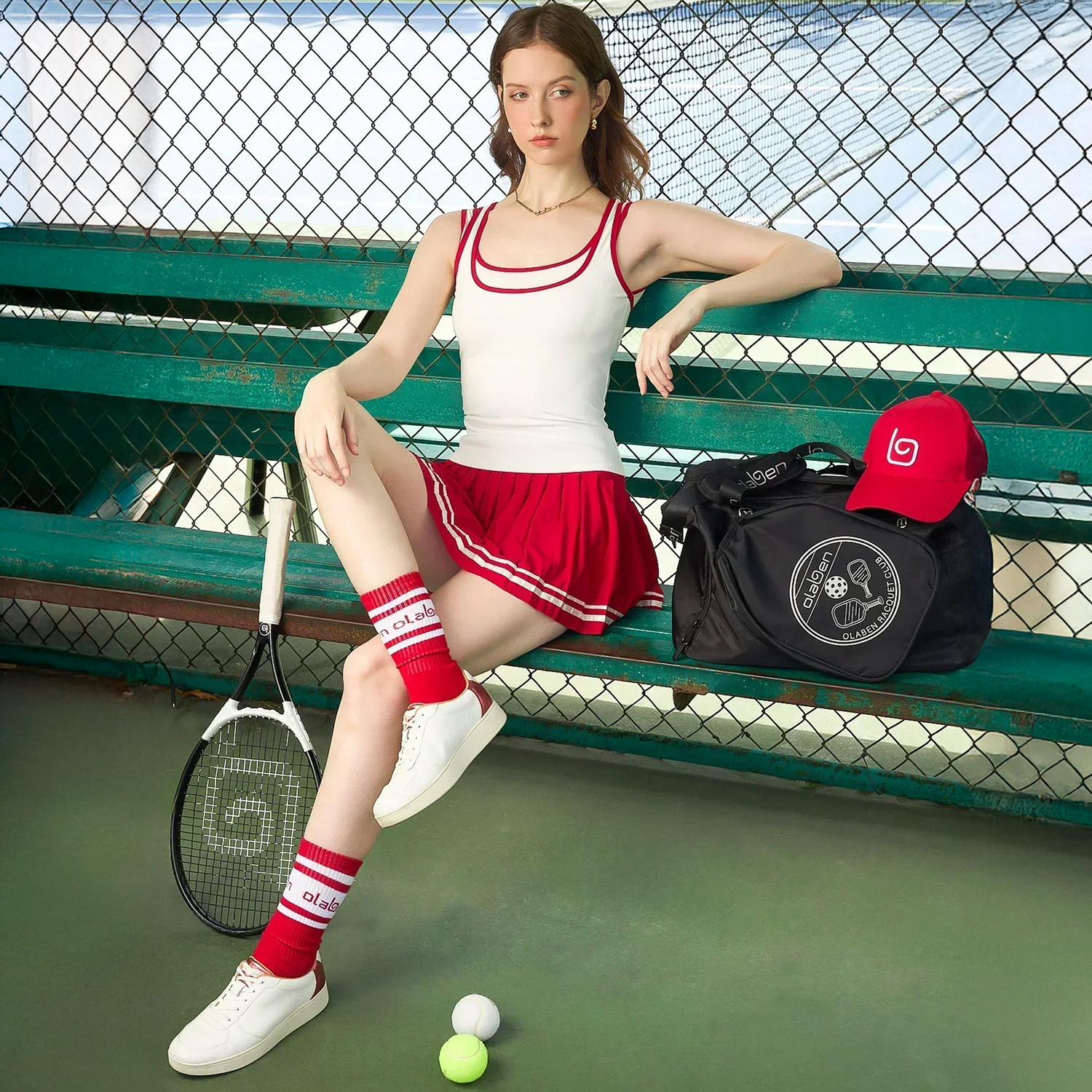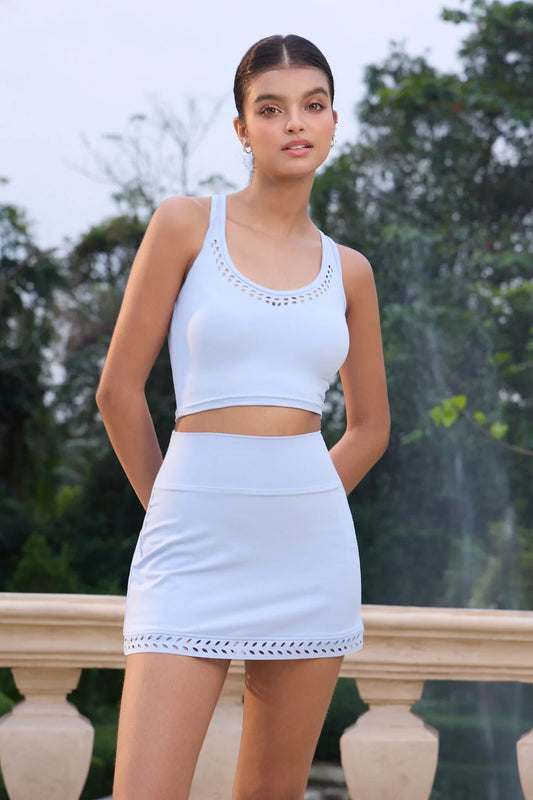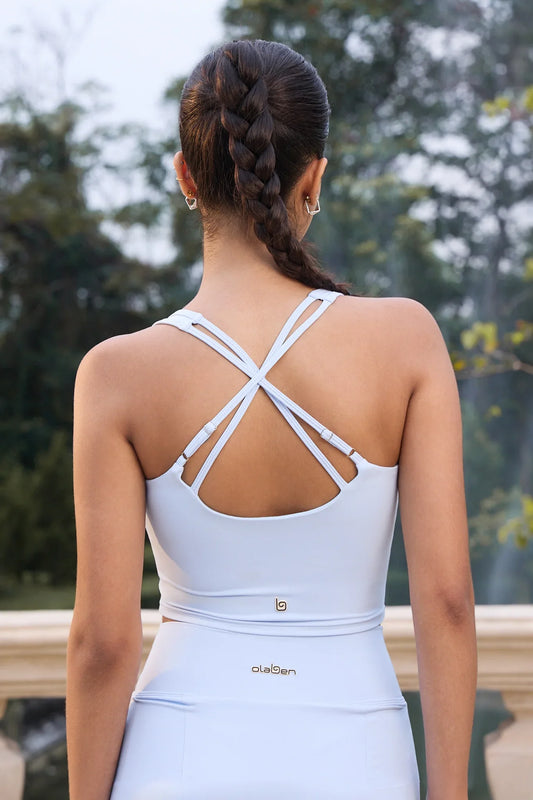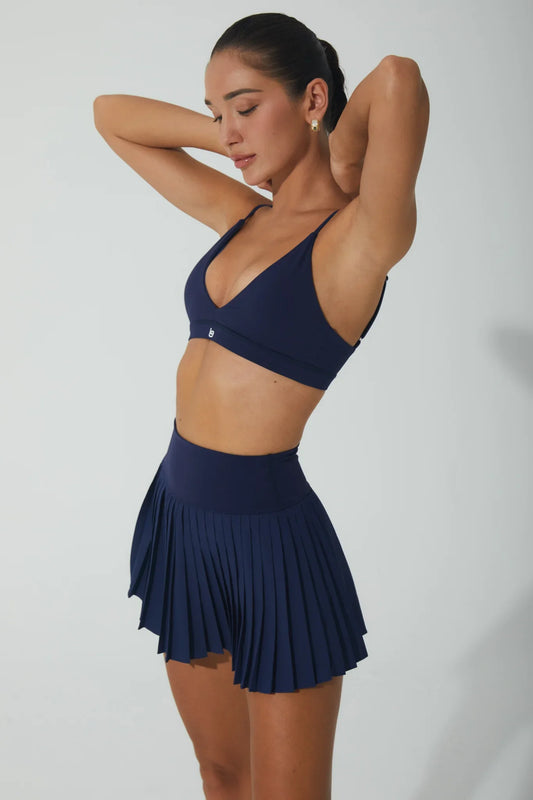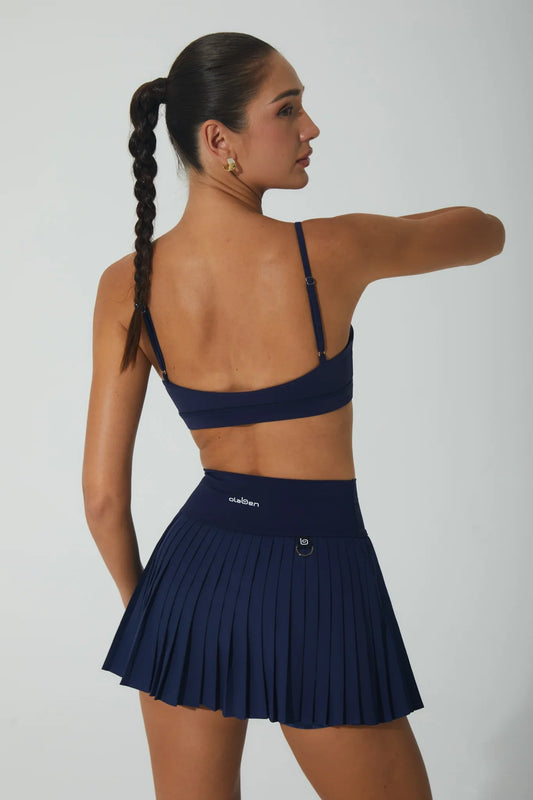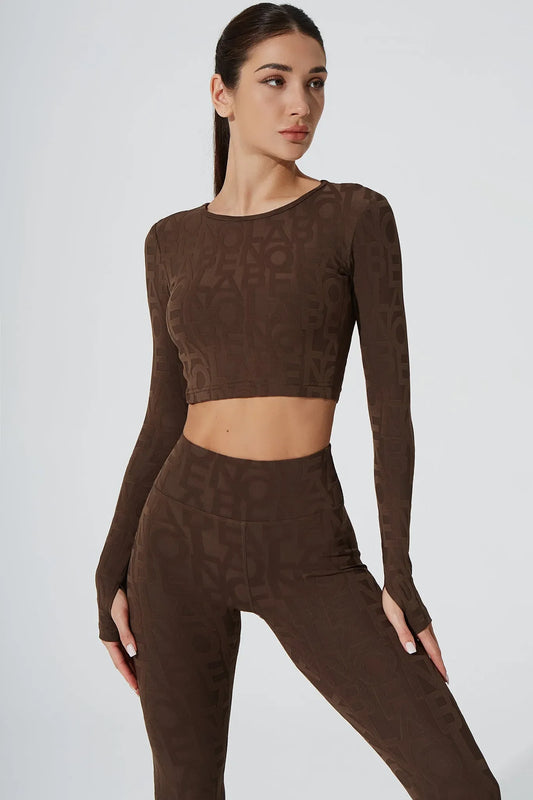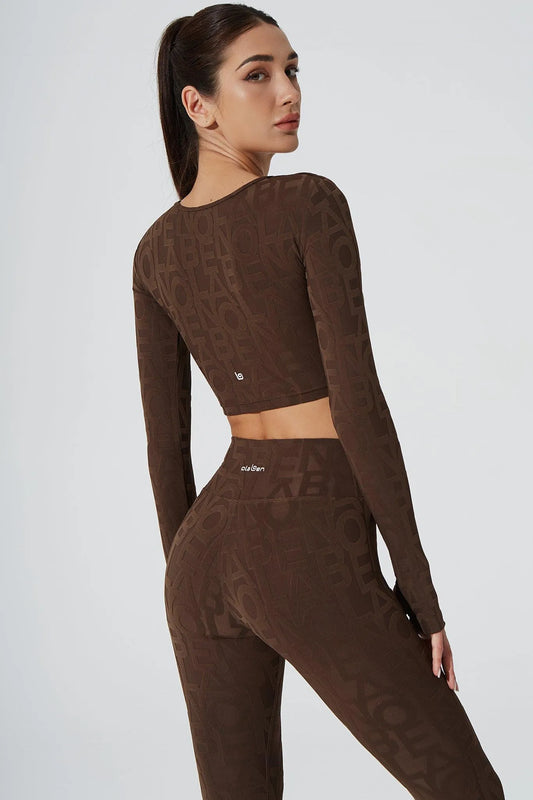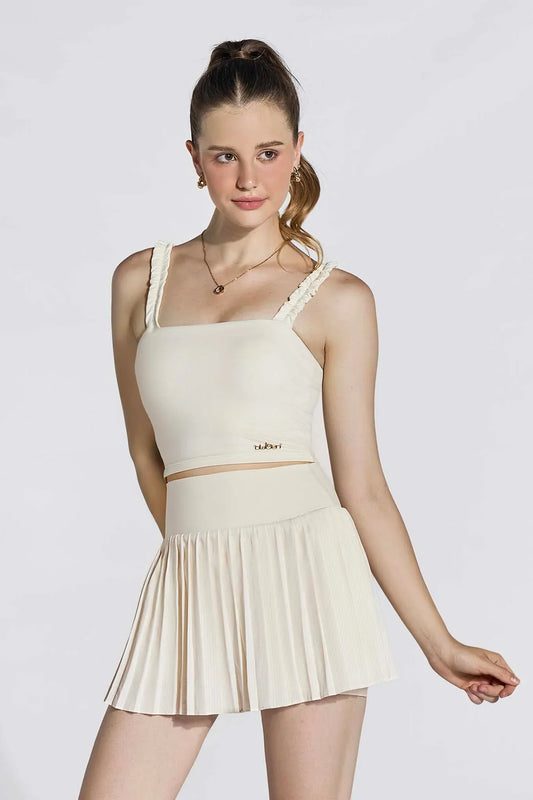When it comes to choosing the right fabric for your clothing, understanding the differences between cotton and polyester is essential. Each material has its own unique properties, benefits, and drawbacks that affect comfort, durability, and style. In this guide, Olaben will break down the key differences between cotton and polyester, helping you make an informed choice for every type of outfit.
What is Polyester?
Polyester is a popular synthetic fiber widely used in clothing and textiles. Originally developed in the 1940s and introduced to markets in the 1950s, polyester became known for its durability, lightweight feel, and resistance to wrinkles and shrinking.
Today, polyester is available in many forms, including virgin polyester (PET), recycled polyester (rPET), plant-based polyester, and polyester blends with natural fibers like cotton, silk, or wool. It’s a versatile fabric used in everything from sportswear to luxury apparel.

How is Polyester Made?
Polyester is produced from petroleum and natural gas through a chemical process. These raw materials are combined under high heat with catalysts to create a viscous liquid, which is then extruded through fine holes to form long fibers. The fibers are cut, spun, and woven or knitted into fabric.
- Virgin PET: Standard polyester made from petrochemicals.
- Recycled PET (rPET): Made from recycled plastic bottles, offering a more sustainable alternative.
- Plant-Based Polyester: Uses plant-derived materials for part of the production process, reducing fossil fuel reliance.
- Poly Blends: Combines polyester with natural fibers for improved comfort, breathability, and softness.
Pros and Cons of Polyester
Pros of Polyester:
- Durable and long-lasting: Polyester fibers are strong and resistant to stretching, shrinking, and abrasion, allowing garments to keep their structure and hold up well through frequent wear and washing.
- Wrinkle-resistant and shape-retaining: It naturally resists creasing and maintains its silhouette, making polyester ideal for travel, workwear, and performance apparel that needs to look polished throughout the day.
- Quick-drying and low-maintenance: Because it absorbs very little moisture, polyester dries quickly and requires minimal care. Most polyester items can be machine-washed and air-dried without special treatment.
- Excellent color retention: Polyester locks in dyes effectively, helping prints and bold colors stay vibrant even after repeated laundering or sun exposure.
Cons of Polyester:
- Less breathable than natural fibers: Polyester doesn’t allow airflow as well as cotton or linen, which can make it feel warm or less comfortable in hot and humid conditions.
- Limited moisture absorption: It doesn’t naturally absorb sweat, which may lead to a clingy or damp feeling during exercise unless the fabric is engineered with moisture-wicking technology.
- Prone to static electricity: Polyester can generate static in dry climates, causing lint attraction or clinginess when layering clothing.
- Environmental concerns: Virgin polyester is petroleum-based, non-biodegradable, and energy-intensive to produce. Although recycled polyester reduces impact, the environmental footprint of conventional polyester remains significant.
What is Cotton?
Cotton is a natural fiber derived from the seed pods of the cotton plant. It has been used for thousands of years, prized for its breathability, softness, and versatility. Cotton is commonly woven or knitted into fabric for clothing, bedding, towels, and home textiles. Its lightweight and comfortable properties make it ideal for everyday wear, while its natural origin makes it skin-friendly and hypoallergenic.

Types of Cotton
Different types of cotton vary in fiber length, softness, and durability:
- Pima Cotton: Extra-long staple cotton known for superior softness, strength, and color retention. Often considered one of the finest cotton varieties.
- Egyptian Cotton: Similar to Pima, it has long, durable fibers and a silky feel, ideal for luxury bedding. Requires specific climate conditions, making it more expensive.
- Upland Cotton: The most widely grown cotton globally. Shorter fibers make it more affordable and versatile, suitable for mass-produced clothing and home textiles.
- Organic Cotton: Grown without synthetic pesticides or fertilizers, offering a more sustainable and eco-friendly option.
Pros and Cons of Cotton
Pros of Cotton:
- Soft, breathable, and comfortable: Cotton’s natural fibers feel gentle against the skin and allow excellent airflow, making it ideal for everyday wear and warm-weather clothing.
- Highly absorbent and cooling: Cotton absorbs moisture efficiently, helping regulate body temperature and keeping you cool and dry during hot summer days.
- Hypoallergenic and skin-friendly: Its natural composition makes cotton suitable for sensitive skin, reducing the risk of irritation or allergic reactions.
- Versatile and widely available: Cotton is used in everything from casual apparel to bedding and home textiles, with a wide range of weaves and qualities to choose from.
Cons of Cotton:
- Prone to shrinking and wrinkling: Cotton can shrink after washing, especially if not pre-shrunk and wrinkles easily compared to synthetic fabrics.
- Color fading over time: Repeated washing may cause cotton fabrics to fade or lose vibrancy, particularly for darker or richly dyed garments.
- Less durable than synthetics: While strong, cotton wears down faster than polyester, especially when exposed to friction or heavy use.
- Loses shape gradually: Cotton doesn’t retain its structure as well and may stretch or become misshapen over time, especially in knits like t-shirts and loungewear.
Cotton vs Polyester – Key Differences
To better understand how cotton and polyester differ, the table below highlights their key characteristics across comfort, durability, care, cost, and versatility. This comparison makes it easier to choose the right fabric for your clothing, home textiles, or activewear needs.
|
Feature |
Cotton |
Polyester |
|
Comfort & Breathability |
Highly breathable; soft and cool; organic cotton is skin-friendly |
Less breathable; can feel hot and clingy; may cause irritation in sensitive skin |
|
Durability |
Strong but can shrink; less resistant to wear |
Very strong, retains shape, resists shrinking, wrinkles, and fading |
|
Care |
Easy to wash; tolerates heat; slower drying |
Easy to wash and quick-drying; avoid high heat to prevent damage; low-maintenance |
|
Cost & Availability |
Widely available; price varies by type (Upland, Pima, Egyptian, organic) |
Affordable; available as virgin, recycled, plant-based, or blended fabrics |
|
Appearance & Versatility |
Soft, natural texture; takes dye well; ideal for clothing, bedding, home textiles |
Smooth or glossy; retains color and shape; ideal for sportswear, outdoor gear, and blends |

Which is Better for Clothing Design: Cotton or Polyester?
Choosing between cotton and polyester depends on the purpose of your project, the desired comfort, durability, and care requirements. Both fabrics have unique strengths, and often, the best results come from blending them to combine the advantages of each.
Everyday Wear
For casual, everyday clothing, cotton is usually preferred for its softness, breathability, and comfort against the skin. Lightweight cotton fabrics are ideal for t-shirts, blouses, dresses, and home textiles. Polyester blends can be added for improved durability, wrinkle resistance, and easier maintenance without sacrificing comfort.
Sportswear & Activewear
Polyester dominates in sportswear and activewear due to its moisture-wicking properties, durability, and quick-drying nature. It helps garments retain shape, resist stretching, and withstand frequent washing. Blends with cotton can enhance comfort while maintaining the performance benefits of polyester.
Luxury & Sustainable Fashion
High-end or eco-conscious designs often favor cotton, particularly organic or long-staple varieties like Pima or Egyptian cotton, for their soft hand-feel and natural aesthetic.
Polyester can also be used in recycled or plant-based forms to create sustainable, durable fabrics that mimic luxury textures while reducing environmental impact. Blending cotton and recycled polyester can achieve a balance of comfort, durability, and eco-friendliness.
Conclusion
Choosing between cotton and polyester ultimately depends on your needs, the type of clothing, and the desired balance between comfort, durability, and care. Cotton offers softness, breathability, and skin-friendly qualities, making it ideal for everyday wear and luxury pieces, especially when using long-staple or organic varieties. Polyester, on the other hand, excels in durability, moisture-wicking, and low-maintenance care, making it perfect for sportswear, activewear, and garments that need to retain shape and color over time.
At Olaben, their men's collection and women's collections include a variety of pieces crafted from cotton, polyester, and cotton-poly blends, allowing you to enjoy the unique benefits of each fabric while creating versatile, stylish, and durable outfits. Whether you’re looking for breathable everyday essentials or performance-driven activewear, Olaben’s fabric selections have you covered.


